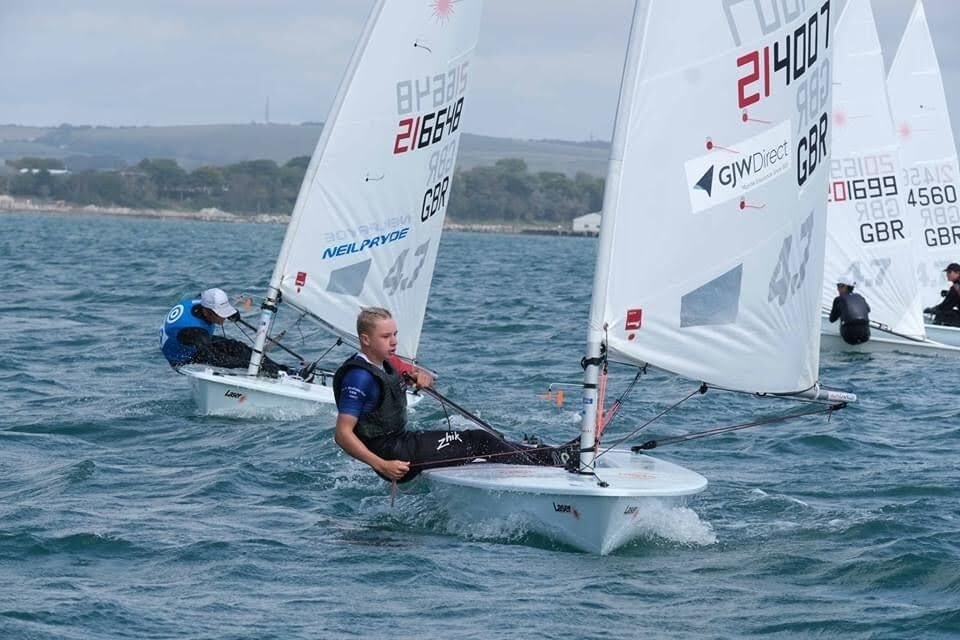How to Avoid Collisions in Dinghy Racing
Posted by:GJW Direct | Feb 15, 2022
It goes without saying, but sailing is not a contact sport, that’s why it’s important to ensure you’re aware of the precautions needed prior to starting your dinghy race.
We’ve put together this guide for avoiding collisions when dinghy racing so you are prepared for your next adventure!
Clearly identify your dinghy
Racing dinghies are often seen covered with identifying markers. This includes displaying a class flag and sponsorship decals to let any recreational sailors on the water know there’s a race taking place.
Understanding the mechanics of your dinghy
The Kicker/Vang is the main control you want to keep handy whilst racing, as it has a considerable effect on the manoeuvrability of your boat. When the kicker is on it's difficult to turn, the boom is lower and catches in the water in order to keep the boat powered. But with the kicker off the boat is more manoeuvrable.
Pulling the Kicker on tightens the leech, which holds the power in the sail. Releasing the kicker loosens the leech, releasing the power and making the boat easier to turn.
It is also important to manage the mainsheet well, whilst in the boat. Ensure it doesn’t get knotted, keep it tidy and running freely, as this is the best way to avoid getting in a tangle.
Maintenance
Similar to any type of boat, maintenance is an essential part of owning a boat. Keep your boat well maintained to ensure all your controls are in good condition and working properly prior to an event.
The last thing anyone wants is the controls failing during a race when it could have been avoided.
Practice, practice, practice

Ever heard the old saying ‘practice makes perfect?’ While we may never reach ‘perfection’, practicing boat handling at every opportunity is a sure fire way to mastering your dinghy racing skills. Learning to manoeuvre in confined spaces, tacks and gybes, scoops, double tacks and reversing out of a situation, learning these manoeuvres will help you to feel more confident in your boat.
On the start line, get to know how long these manoeuvres take and judge your time, distance and space.
Confidence is also key here.
Spatial awareness
Familiarise yourself with the size of your boat and that of others. Mixed starts have different fleets with boats varying in size and performance.
It’s also important to keep your head out of the boat. Spatial awareness allows you to know who’s around you and anticipate where they’re going.
Don’t forget you can communicate with other boats out on the water, speak to them, ask their intentions and what course they are taking. You can then decide your course, anticipate your next move and know where it’s safe to go.
Check the weather
We can’t control the weather and while it may be ideal to sail during the summer months, many dinghy racing competitions often run during the colder months of the year. That’s why it’s important to be aware of the wind conditions on any given race day, so you can try to anticipate the gusts level and adjust your manoeuvres accordingly.
Learn the rules
Knowing the rules of sailing is a must for any sailor looking to get competitive. The rules are free to download at www.sailing.org. It’s important to know who has the right of way should you encounter another vessel during a race. Rule 14 states;
“14. AVOIDING CONTACT A boat shall avoid contact with another boat if reasonably possible. However, a right-of-way boat, or one sailing within the room or mark-room to which she is entitled, need not act to avoid contact until it is clear that the other boat is not keeping clear or giving room or mark-room.”
“I always find the best way to avoid a collision is to get out in front!” - Jack Graham-Troll, junior champion and GJW Direct sponsored sailor.
There are many things you need to take into consideration when buying a dinghy, that's why we've created this helpful guide that helps with your purchase.

.png)

